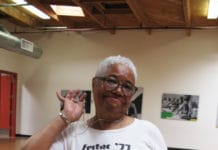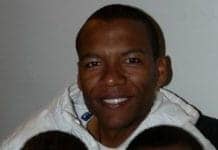by Laura Savage
http://youtu.be/btZAKJeZBJE
African American parents in Berkeley are tired. Tired of Black students being at the bottom of an achievement gap that shouldn’t exist in a city that prides itself as a nationwide model for civil rights and equality. A city whose school district was the first to have a Black Studies Department at the high school level. A city that is home to one of the most prestigious universities nationwide and beyond. Black parents are tired of the accolades that Berkeley Unified School District (BUSD) gives itself that aren’t reflected in its work with Black students.
Black parents are tired of the accolades that Berkeley Unified School District gives itself that aren’t reflected in its work with Black students.
“When you talk about the experience of low-income people or Black people, they really don’t know,” says Leo Stegman, who’s a parent of a Berkeley High graduate. “I will say that it is either negligence or intentional. They don’t know how to deal with Black kids. They don’t know how to deal with Black culture.”

Parents and Children of African Descent (PCAD), which advocates for equity and results in education, and other organizations sponsored a march and rally on May 19, 2014, Malcolm X Day, which is a school holiday in Berkeley, in support of accountable results by BUSD to close the achievement gap between Black students and their peers.
“There is this myth that we’ve made so much progress, that Berkeley is so great – and yet the achievement gap in Berkeley is one of the most woeful comparisons that you can imagine,” says Berkeley City Councilman Chris Worthington. “So every effort like this that sort of challenges the status quo and says we can do better – we need to look at the results that are happening in Berkeley, and it’s not good enough by far.”
“We need our parents to understand what A-G requirements are, which means we’re going to have to have some workshops so our parents feel connected enough to the school that they can come,” says Laura Babbitt, executive board member of PCAD. “Most parents think if their child has graduated from high school that they’re on track to go to college. That may have been when they were in school, but things have changed. So we have to educate our parents … to navigate the system.”
According to Babbitt, PCAD’s 2020 Vision in Berkeley was “implemented by community organizations because of the alarming statistic that BUSD’s 25 percent of the top performing students were all white. Then when you looked at African American students, we made up 75 percent of the bottom, nationally. Our 2020 Vision came together to try and make our schools inclusive, so we could try and get the same results in all the population.”
Some key initiatives in the 2020 Vision are 1) creating a college-going culture, 2) achieving third grade math literacy, and 3) having a welcoming school and family environment.

“The problem with the 2020 Vision is not the vision; it’s the actual implementation,” says Babbitt. “So we are now trying to jumpstart a true process which walks that vision out, the true process that says how are we going to get there? How are we going to ensure that all third graders are actually literate? How are we going to ensure we have a college-going culture? How are we going to come together as a community – parents, teachers, staff, the city, all of our stakeholders – and really make sure that these initiatives end up with positive results?”
“The laser-like focus on the results is one of PCAD’s great virtues. They’re sort of pointing out the specific, the actual numbers, of what’s happening in the real world. And others are saying, ‘Well, look, we’re allowing these students to graduate.’
“But are we empowering them so that students can graduate and be successful and get into college and get into careers? I think we’re not giving students the tools they need. And it’s not enough to say, ‘Well, people graduated from high school, so we did our part.’ That’s not good enough!”
Culturally responsive pedagogy
Nationwide discussions around the relevance of having not only student-centered curriculum but a diverse teaching staff that reflects the ethnic makeup of districts have been brought into the spotlight. There are local examples of districts who seek to use culturally responsive pedagogy to address the achievement gap between Black students and their peers.
San Francisco and Oakland, for example, are actively trying to recruit teachers of color that better represent the student body and teachers who are versed in educational equity in hopes of bringing cultural relevance to the classroom.
San Francisco and Oakland, for example, are actively trying to recruit teachers of color that better represent the student body and teachers who are versed in educational equity in hopes of bringing cultural relevance to the classroom.
In sum, culturally responsive pedagogy is a student-centered approach to teaching that highlights cultural uniqueness and strengths of students to better promote excellence and self-esteem. Culturally confident students perform better academically. It aims to increase well-rounded students, especially of color, who are in tune with their cultural place in society – and see it positively so they can go forth into the world prepared academically and socially.
African American students like ninth grader Nya Sandeford can spend their entire Berkeley Unified school careers without a single teacher of color. This is a reality even though Berkeley High has a Black Studies department.
“I know that we are the only school in America that has a [Black Studies department] but I feel that that is the only department where the African American teachers are. So if you don’t take those courses, you don’t see any African American teachers.”
Sandeford says: “I really want to show that Black equality is not present today in our schools … To see so little of people who look like me is kind of scary because in my middle school there were so many of us, and now I’m going to school where there are only three in a classroom. It’s very nerve-wracking.”

“I feel many of our kids are misinterpreted, their actions and behaviors,” says Berkeley Superintendent of Schools Donald Evans, who is African American. “And therefore it can be construed as something that it’s not. So we have to teach our teachers some of the things about African Americans so they can relate to us in a way where they’re not kicking us out when we do something.
“And that’s what I see a lot with Black boys. If they raise their voices too loud, well, the teacher may say he’s yelling; he’s yelling at me. He’s being defiant. It’s about how do you work with us to get the best out of us. That type of training would help our teachers as they relate to our kids. Then you don’t see so many kids being sent out or being suspended. Many of our teachers don’t know how to work with us.”
Babbitt thinks BUSD needs “teachers and administrators to really grab hold and accept African American people as their own culture who can thrive with our characteristics. So we need different teaching styles and learning modalities to be implemented in the classrooms because everybody is not a read/write learner. Some people are audio-visual learners and kinesthetic learners. So how can we have one goal, but that we teach in multiple ways so you don’t lose a student population. How do you teach that one concept so you’ve reached everyone in your classroom?”
One way to address the difference in learning and using a culturally responsive pedagogy is adding teachers of color to BUSD faculty.
“I have had zero Black teachers,” says Sandeford. “I haven’t had any at all. Period. I feel like I’m missing out. All I really learn about is American history. I don’t learn about African American history and when I do it’s about how they were enslaved.
“I feel like if I had African American teachers, they would more so culture me into not thinking that we’re weak and get taken advantage of all the time. You don’t really hear that the Africans took over Spain where they dominated. We only get to hear when Spain conquered the Americas. So we don’t get the full story.”
“I feel like if I had African American teachers, they would more so culture me into not thinking that we’re weak and get taken advantage of all the time,” ninth grader Nya Sandeford told the crowd.
Demands for change
As for what struck a nerve about the urgency of African American students’ needs in Berkeley, Babbitt says PCAD is very concerned about eligibility to go to college.
“It’s about when our schools are saying we have high graduation rates, what they’re not saying is where they’re graduating them to. What they’re not saying is that Ds and D-minuses are creating high graduation rates … and we want students of excellence.”

“As Frederick Douglass said, ‘Power concedes nothing without demand,’” says Stegman. “We need to focus on our kids. They’re not going to educate your kids. They don’t care about your kids like you care about your kids.
“We need to tell them that we want them to give resources to our kids just like they give to other kids. Berkeley spends $3,000 more per student than the state of California (on average), more than Oakland, and they get worse results. How do you spend more money and get worse results?
“When a white person wants something, they get it. When a Black person needs something, they don’t have the money. So unless we make sure that these resources are spent on our kids, nothing is going to change.”
What is BUSD doing to address the achievement gap and better serve its Black students? New Superintendent of Schools Donald Evans, who supported and attended the rally, says, “We’re implementing Common Core. So for our African American students, it’s getting them access and an opportunity to master Common Core.”
“We a have an incredible achievement gap here in Berkeley,” says Evans. “And the only way we’re going to close that is preparing our kids in terms of what they need to master the content.”
“We a have an incredible achievement gap here in Berkeley,” says new Superintendent of Schools Donald Evans, who supported and attended the rally.
Evans says that one of the issues for BUSD is not having enough support systems for students.
Rally supporter, Berkeley resident and BUSD Safety Officer Greg Williams feels “that some of the Berkeley schools are just passing our students through. They’re not really studying the African Americans and making sure they get their lessons done. Some of them are getting out of school not knowing anything.”
During Evans’ short tenure, he has implemented Superintendent Saturdays, which give students, particularly of color, the opportunity to learn math in different ways and to show how they learn things besides direct instruction. It is more hands on.
“It’s more than just being a mentor,” says Evans. “It’s about having programs that really concentrate on their strengths.”
Moving forward
PCAD and other organizations recognize that now is the time to seize an opportunity if BUSD truly wants to close the achievement gap for its students. Many components are needed in order to do that.

“I don’t think any one small step is going to be the answer, but I think empowering the parents and listening to their ideas, making a commitment to trying harder and looking at where the funding is going – I think all of those are baby steps in the right direction,” says Worthington.
“We need a sustained commitment to really examining this and admitting that we’re failing. There’s a lot of hype out there that Berkeley is so cool. We’re so progressive, but they’re not really admitting that our schools are failing our students.”
“There’s a lot of hype out there that Berkeley is so cool. We’re so progressive, but they’re not really admitting that our schools are failing our students,” says Berkeley City Councilman Chris Worthington.
In addition to staffing issues, BUSD can address the achievement gap by accepting Black culture.
“One of the things we’re looking at now is working with our teachers of color. … It’s very difficult for some of our teachers,” says Evans. “They might be the only one of color at their school. One of the issues I see is how are teachers navigating the politics of their site.”
A priority for Evans “is strengthening that partnership between the parents and the district and then also providing the support and resources for our parents. For example, providing training around how do we navigate the politics of schools, the district. How do you advocate for your child where you’re going to get the best out of that situation. And I don’t think many of our parents really know how to advocate in a way where they’re going to get the most for their child. So I want to show them how they can do that.”
“If we’re ever going to empower these children to succeed, we have to empower the parents to be heard by the city, by the School Board. We need to prioritize the funding on the things that the parents feel are most important to get addressed. We need to admit that we’re not succeeding.”
“If you definitely believe that something needs to be changed, then fight for it,” says Sandeford. “Don’t just sit back and let things happen. Like Mahatma Ghandi said, ‘Be the change you want to see in the world.’”
Co-sponsors of the rally included the Berkeley NAACP, California African American Alliance of Educators (CAAAE), Young Gifted and Black (YGB) – students who perform around the Bay Area spreading the message that Black children are brilliant and more than capable of achieving – Black Student Union (BSU), and African American Regional Educational Alliances (AAREA).
Laura Savage is a Bay Area-based freelance writer. She can be reached at lsavage26@gmail.com.

 Store
Store










